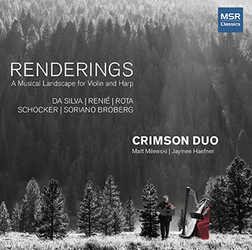21st Century Classical Music
In a world where classical music is often seen as outdated, "21st Century Classical Music" is a refreshing take on the genre. The album features a modern composer with a new perspective on classical music and its place in the 21st century. With a mix of traditional and contemporary pieces, the album will please both fans of classical music and those new to the genre.
In the early days of electronic music, composers often created their pieces by hand, using various hardware devices to create and control sound. However, with the advent of digital technology and the personal computer, a new way of creating music emerged – algorithmic composition.
Algorithmic composition uses a set of rules or algorithms to create music automatically. This can be done by writing code that generates musical scores or using software that can create and control sound in real time.
One of the earliest examples of algorithmic composition is the software developed by Max Mathews in the early 1960s. His program allows users to create music by drawing lines and shapes on a screen. The lines and shapes are then converted into musical notes, and the software plays them back in real-time.
Since then, algorithmic composition has become a popular tool for composers and musicians, and various software programs and applications allow for algorithmic composition. These programs can be used to create simple melodies and rhythms or to create complex pieces of music with multiple layers and textures.
The algorithmic composition can be used to create music in any style or genre and can be used to create pieces for any instrument or ensemble. It can also create soundscapes, ambient music, and even film scores.
Algorithmic composition
Algorithmic composition is a powerful tool for composers and musicians and offers a new and unique way of creating music. It is a great way to experiment and explore new ideas and can be used to create both innovative and original pieces.
Algorithmic composition is a technique used by composers to create music using algorithms. It is a computer-assisted composition in which the composer uses a computer program to generate musical material. The composer then uses this material to create a musical piece. The algorithmic composition has become increasingly popular in recent years, as it allows for greater creativity and experimentation in music creation.
Algorithmic composition is based on the idea that music can be created using mathematical formulas and algorithms. These algorithms can generate musical material, such as melodies, chords, and rhythms. The composer can then manipulate and arrange this material to create a musical piece. Algorithmic composition is often used in conjunction with traditional composition techniques, such as harmony, counterpoint, and form.
The use of algorithms in music composition has a long history. In the early 20th century, composers such as Arnold Schoenberg and Pierre Boulez experimented with algorithmic composition. In the 1950s, composers such as John Cage and Karlheinz Stockhausen began to use computers to generate musical material. In the 1980s, computer music programs such as Csound and Max/MSP began to be used by composers to create algorithmic music.
The algorithmic composition has become increasingly popular recently, allowing for greater creativity and experimentation in music creation. It can also create more complex and unpredictable music than traditional composition techniques. Algorithmic composition can be used to create music that is more abstract and experimental, as well as music that is more closely related to popular music styles.
Algorithmic composition is an exciting and innovative way of creating music. It allows composers to explore new possibilities and create unique and creative music. Algorithmic composition is a powerful tool for composers and is likely to become even more popular.
The Future of Classical Music
Classical music is one of the world's oldest and most revered forms of music. Though its popularity has waned in recent decades, many believe classical music still has a bright future.
One of the main reasons classical music's decline in popularity is its lack of accessibility. It can be difficult for the average person to understand classical music's complex compositions and arrangements. This has led to a perception that classical music is elitist and irrelevant.
However, many believe classical music can be revitalized with a few simple changes. For example, classical music could be more accessible to the average listener by incorporating more popular elements into its compositions. This could be done by incorporating more rhythmic and harmonic elements into the music or by using more modern instruments and arrangements.
Classical music could also be promoted more effectively to the general public. This could be done by staging more classical concerts and recitals and broadcasting more classical music on television and radio.
Finally, classical music could benefit from a renewed focus on education. This could be done by offering more classical music classes in schools and providing scholarships for young people to study classical music.
In conclusion, there are many reasons to believe that classical music still has a bright future. With a few simple changes, classical music can be made more accessible and relevant to the general public. It can also be promoted more effectively and given a renewed focus on education. These changes could revitalize classical music and make it more popular.













